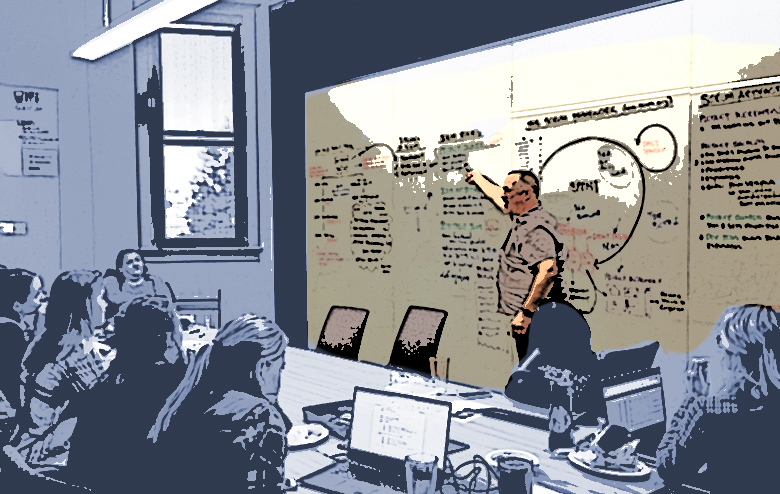How Lean IPD Thinking Can Fix The Problem You Didn’t Know You Had
Romano Nickerson
The myth of on-time/on-budget
I’m going to share a dirty little secret. It’s a secret that the design and construction industry frequently hides from the public, from the owner, and worst of all, from itself.
So, what is this secret? In the industry, many projects touted as “successes” really should be considered failures.
Within the industry we use three primary measures of a capital project: schedule, budget, and scope. A recent survey by Dodge Analytics queried owners on whether capital projects were late, over budget, or both. In a critical oversight, though not a surprising one, the owners in this survey were not asked if the original scope of work they requested was delivered. This missing line of inquiry hides the fact that even when projects are on time and on schedule (the survey indicates that fewer than 30% of projects were), the owner often receives a project diminished from the original project scope.
As practitioners, we must consider scope failure as project failure, as equally visible as when projects go over schedule or over budget. We don’t measure or report enough on how effective we were in delivering the original scope of a project. We have taken it as given that “value engineering” over the course of the design of a project by cutting scope to bring a project within budget and schedule constitutes a success. Unfortunately, this approach can impact the way an owner operates a new facility, harming their ability to turn a profit and extending the time needed to repay the capital cost of the building.
The success story of a project often will proclaim “the hospital was delivered on time, and on budget”, but what is missing is the damning factoid noting “…but a planned wing of beds was shelled instead of being built out to achieve this outcome.” The shell space is then portrayed as “growth,” when in reality the scope is simply kicked down the road to another capital project cycle.
This is a significant and all-to-frequent problem with capital projects, but not one without a solution.
Lean thinking tells us that we should never begin an activity that we cannot finish. In applying this to capital projects, it means that a project team should never begin work until the program, schedule, and budget are deemed achievable and set in place.
How do we accomplish this?
Avoiding pitfalls with a validation exercise
Lean teaches us to return to a touchstone, always being able to answer the question “What problem are we trying to solve?” Applied to a capital project, this means that we should always know what we are designing and building. Yet, far too often the design process is used to define what a project is. This is an inherently speculative and exploratory (read: wasteful) process which inevitably leads to value engineering (read: scope reduction)—the key ingredient for scope failure. In our experience, one of the best ways to avoid these pitfalls is by using a validation exercise.
Taken in the lean context, a validation exercise determines the scope of a project and establishes the conditions of satisfaction that govern how the team will deliver it, in advance of any design work. This is accomplished by assembling an integrated team of project stakeholders who work collaboratively to refine the program, develop the base design which is then reflected in a working estimate and a project schedule, and ultimately produce a pro forma that describes the target business plan and schedule for capital facility ROI.
Functionally, the team proposes alternatives that are run through a validation cycle. Let’s say an owner asks for a surgery center with four operating rooms. The designers would then develop a functional program and test fits that are priced and scheduled by the builder. Following this, the owner plugs the schedule and cost data into the pro forma to test payback against the business plan. The team then undertakes alternatives to improve various aspects of the cycle. One fewer operating room would cost less to build but would extend the payback, while an additional operating room would cost more to build but would increase operating capital.
After multiple, rapid cycles of validation, developed as quickly as multiple scenarios in a single day, the team settles on a best value solution that the team can deliver on time and on schedule. Most importantly, the team will deliver a facility that the owner can afford and that meets their operational objectives. Full scope delivered on time and on budget!
The sound lean thinking in this approach is reflected by the fact that project delivery becomes a task of execution rather than one of exploration. There’s no question that the team will need to work hard to deliver scope, with myriad design decisions required to achieve the conditions of satisfaction. However, seeking how best to deliver on design intent is a different kind of exercise than seeking to uncover the design intent.
As lean thinking continues to permeate the construction industry, scope must become a stated measure of success. Right now, we need owners to demand that teams accept scope accountability—scope failure must be seen as project failure. Fortunately, we’ve uncovered another secret: validation is the remedy!
(Also published in the Colorado Real Estate Journal Health Care Quarterly, April 2019 edition)



